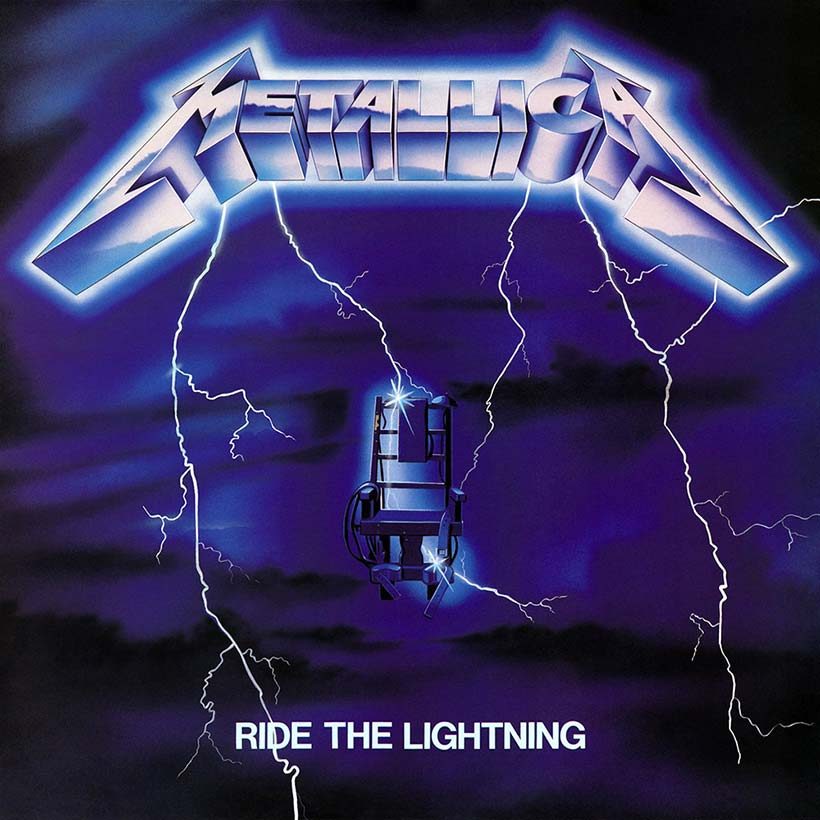‘Ride The Lightning’: The Electrifying Metallica Album That Changed Metal
‘Ride The Lightning’ injected a new sense of excitement into the stagnant scene of the early 80s and changed thrash metal forever.

The year was 1984. Just twelve months after the release of their iconic Kill ’Em All album, thrash metal pioneers Metallica had captured the attention of the world’s metal community, their faster, more aggressive approach to heavy metal injecting a new sense of excitement into the somewhat stagnant US scene of the early 80s. Picking up from where the likes of Iron Maiden and Motörhead left off, the group was on the cusp of changing the blueprint of the heavy metal genre forever with their sophomore release, Ride The Lightning, released on July 27.
Listen to Ride The Lightning now.
Just prior to finishing a tour with UK black metal pioneers Venom in June 1982, Metallica arrived in Copenhagen to begin pre-recording rehearsals and writing material for Ride The Lightning in Sweet Silence Studios, with producer Flemming Rasmussen at the helm.
The resultant album cemented Metallica’s separation from their denim- and leather-clad peers. Clearly also step up from its predecessor in terms of production, Ride The Lightning evidenced a more advanced and powerful delivery which is now deemed a genre-defining cornerstone in the way that the thrash and speed metal subgenres sound today.
The album’s opening track, “Fight Fire With Fire,” sets the tone, its sophisticated – but nonetheless brutal – sound creating a perfectly balanced masterpiece. Abandoning the then-dominant heavy metal subject matter of demons, wizards and fantasy, Ride The Lightning’s lyrical content was inspired by politics, history, war, and capital punishment.
The latter permeates the title track, which explodes with a catchy groove-infested riff and an anthemic chorus that still rings out loud today – the work of a maturing band pushing the boundaries of heavy metal and exploring uncharted territory within the very genre they had helped create. Elsewhere, songs deal with the idea of living death through cryogenics (“Trapped Under Ice”), self-empowerment (“Escape”), and tales of Biblical prophecy (the timeless anthem “Creeping Death”).
Without warning, the opening sequence to the thunderous, stadium-bothering third track, “For Whom The Bell Tolls,” solidifies the impact of Ride The Lightning as one of the group’s most iconic albums, marrying the unlikely styles of then bassist Cliff Burton’s classic rock and jazz influences with the rest of the band’s metal drive. It leads to the album’s halfway mark, which signifies the most poignant moment in Metallica’s career with the brave introduction of a thrash metal ballad, “Fade To Black,” marking yet another new approach to thrash metal. Unlike anything that had hitherto come out of the genre, the song’s slow, melodic arrangement, from its opening chords to the grandiose, heart-soaring finale, helped the band gain a new level of respect from music critics around the globe.
The album’s remaining tracks continue to pulse with innovation and momentum; elements of soulful beauty and depth are in abundance, not least with the use of classical guitars on the prelude to “Fight Fire With Fire,” before the brutal assault of Hetfield and Hammet’s buzz-saw guitars, accompanied by Ulrich’s machine-gun drumming. Meanwhile, closer “The Call Of Ktulu” (originally titled “When Hell Freezes Over”) delivers nine minutes of thunderous instrumental passages inspired by influential horror fiction writer HP Lovecraft, making it abundantly clear that death is the album’s predominant subject matter – albeit delivered it in a more subtle and understated format compared to the over-the-top imagery and graphic lyrics used by Metallica’s contemporaries.
With their 1983 debut having exposed the metal scene’s need for something heavier and more aggressive than what was on offer, Ride The Lightning’s innovations were greeted with refreshing enthusiasm by both the rock media and fans alike. A glance at the songwriting credits reveals Cliff Burton’s fundamental contribution to the group’s evolving sound: having co-written nearly three-quarters of the album alongside James and Lars, Burton was very much a catalyst in pushing the band into uncharted musical territory and breaking down the boundaries of heavy metal, one song at a time.
The result was an album on which each of the eight tracks were all, in their own right, cornerstones of not only thrash, but the entire heavy metal genre, proving that there was more to the music – and this band – than drinking beer and banging your head. Metallica’s ability to compose fast, crushingly heavy and complex music, loaded with an abundance of delicate, soulful, and deeply moving arrangements, dramatically separated them from the competition.












